What Climate Change Looks Like (In 6 GIFs)
We've been warned that failure to act on climate change could prove disastrous for our planet, but we are not yet acting at the rate necessary to combat its effects. Part of the reason for this sluggish response, besides political and logistical factors, may be due to the fact that climate change is not quite as "in-your-face" as other problems in our daily lives.
We've seen weather events and natural disasters increase in scope and frequency over the last couple years, but these are just intermittent reminders. Climate change has and will continue to hurt us gradually, making it difficult to inspire communities and their leaders to do anything about it. So, to make it easier to visualize what is really happening, here are some easily-digestible GIFs displaying how global warming is affecting us.
How Global Temperatures Have Changed in the Past
This image shows how the Earth has warmed over the last six decades. Nine of the ten warmest years since 1880 have all occurred since 2000 (the outlier being still very recent 1998).
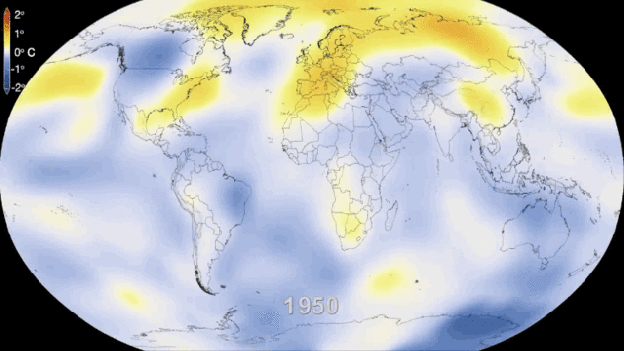
Full video via Nasa Goddard YouTube channel.
GIF via dashburst.com
Predicted Temperature Changes in the Future
NASA constructed this model that estimates possible temperature and precipitation pattern changes throughout the 21st century. In the simulation, carbon dioxide concentrations will reach 670 parts per million by the year 2100, up from around 400 parts per million CO2 today.
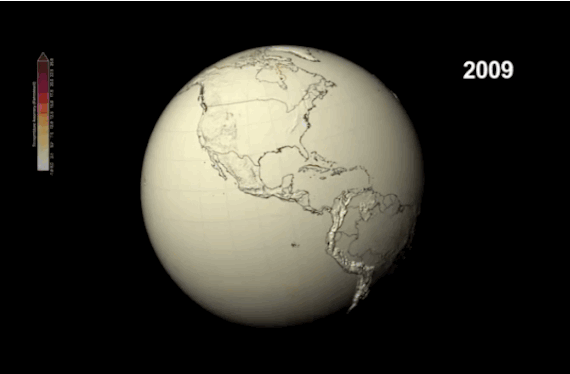
Watch the full simulation on their YouTube channel.
GIF via Buzzfeed.com
CO2 Moving Through the Atmosphere
The latest figures show that Carbon Dioxide (CO2) accounts for 82 percent of all greenhouse gases resulting from human activity, mostly through the combustion of fossil fuels for transportation and energy. This simulation details how Carbon Dioxide (CO2) moves through our atmosphere over the course of a year.
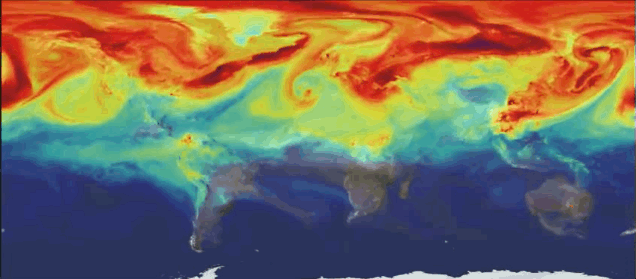
Full simulation can be seen at i09.com.
Ice Melting in the Arctic
The Arctic used to be packed with very thick "old" ice, meaning ice that was formed 9 or more years ago, but less and less of this old ice remains as temperatures warm. This seems inconsequential, but old ice does not melt away as easily during the summer as new ice does. This suggests that climate change is making it more difficult to not only form new ice in the arctic, but also to retain it.
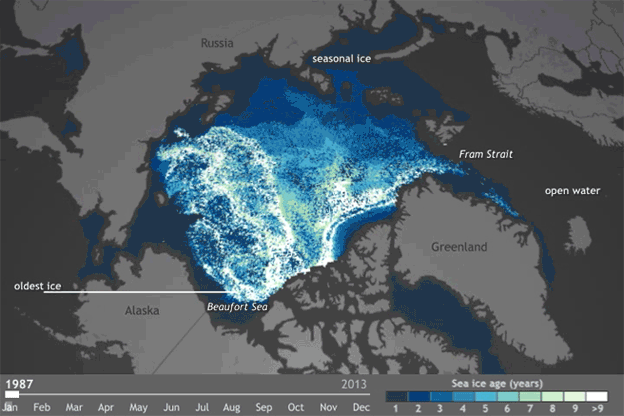
Watch the whole video on NOAA's YouTube channel.
Ice Melting On Our Own Turf
Glaciers in Alaska have also been dramatically affected by climate change. You can see in this timelapse that the Columbia Glacier in Prince William Sound has lost about 12 miles in length and nearly 1,300 feet in thickness since 1980. At one point in 2001, it was pulling back at about 98 feet per day!
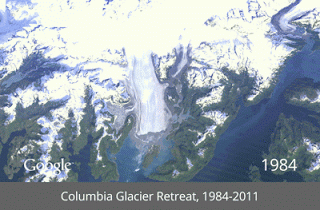
Watch the whole video at time.com.
GIF via blog.dashburst.com.
Coral Reef Bleaching
Our underwater ecosystems are being hit by a number of environmental foes, and climate change is one of the greatest threats. Coral reefs are more susceptible to bleaching and infectious disease outbreaks as temperatures rise. Many of the world's beautiful underwater landscapes have already been severely damaged.
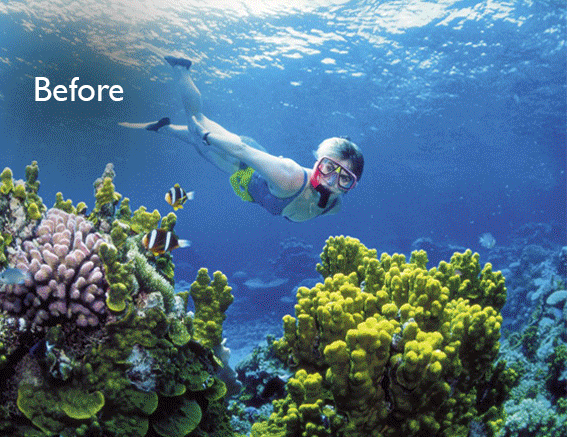
See original photos from ecowatch.com and businessinsider.com.
BONUS GIF: Animals Endangered By Climate Change
This is not so much what climate change looks like, but rather what we'll lose if we don't act. It's estimated that one-third of common land animal populations could see dramatic losses during this century because of climate change. Species all over the world are threatened by rising global temperatures that harm ecosystems and compromise animal habitats, including polar bears, sea turtles, pandas, and elephants.
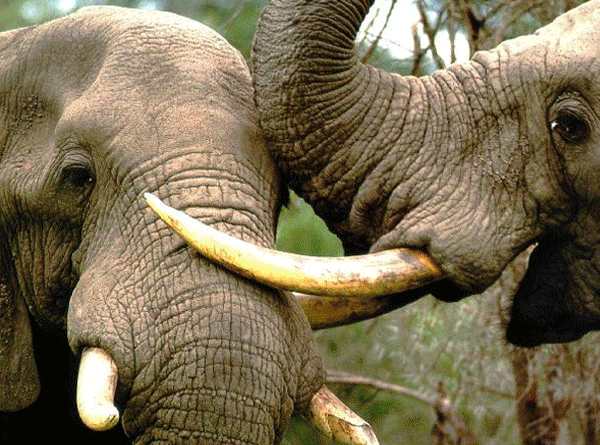
Remember that a simple way to help stop climate change is recycling your clothes! Click here to learn more, or use our Bin Finder and drop off a bag of your unwanted textiles!
